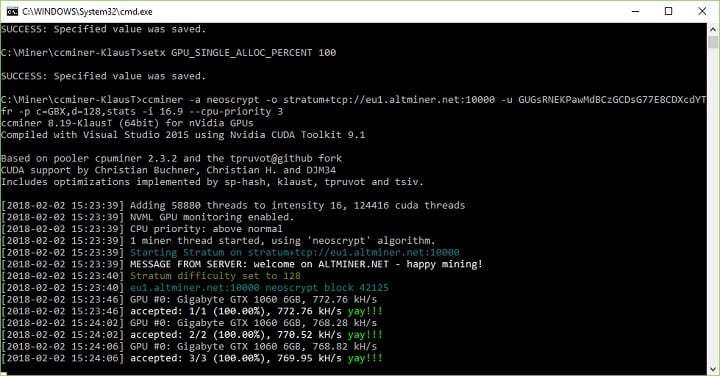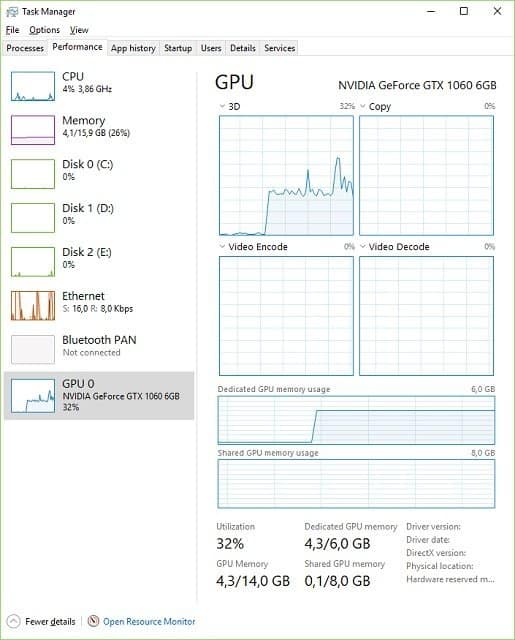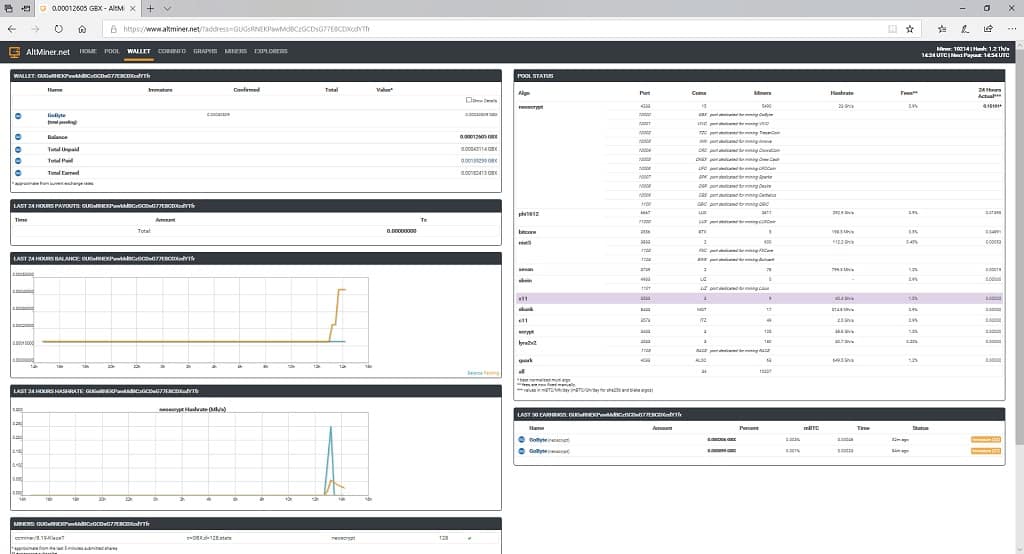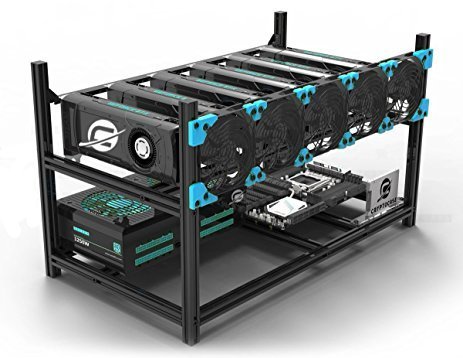Type of mining
Most of the coins support a way to find new blocks in the blockchain. These blocks contain new coins, till the hard cap have been reached, and will be added to the stock. This can be done in several ways:
- Proof of work (work in processors)
- Proof of stake (random selection by wealth or age)
- Proof of authority (random selection by use of authorities / master nodes in the network)
- Proof of space (work on disk or in memory)
- Proof of usage (transactions will supply you extra coins)
- Proof of importance (random selection by wealth or age)
Proof of work is used from the beginning with CPU (core processors) and GPU (graphic processors) and costs a lot of energy to solve the right puzzle. Proof of stake is used to add a more energy sensitive way, but can cause issues if all coins go to very big wallets (which must be online the whole day).
There are also cryptocurrencies (tokens) which don’t support mining at all for example the Ripple $XRP.
Mining pools
To keep it simple, mining is finding a block in the blockchain and get paid for that in coins. The trouble is that it’s very difficult to find a block because of the algorithms and already found blocks.
It’s possible to do solo mining with the miner software connected to you local wallet on your local PC or server. If you find a block then all the coins are for yourself.
It’s possible to join a mining pool (website + lots of services) too. You connect the mining software to the pool and the pool pays out to the wallet adress. Most of the time the mining pool has a fee and won’t pay out small fractions of coins. If the mining pool finds a block, you will get and the part which you have contributed to the pool. If you run 575 KH/s and the pool runs 57,5 MH/s then we luck you will get 1% of the coins. For each coin there are most of the time multiple mining pools, so the size of you mining pool compared to others matters too.
Please have a look at altminer.net to see how a mining pool looks like.
Algorithms
Cryptocurrencies are using crypto algorithms to hash their documents.
What are the most used algorithms?:
- SHA-256
- Ethash
- CryptoNight
- Scrypt
- Equihash
- Neoscrypt
- X11
- X17
- Lyra2v2
- SHA-3
- Groestl
Mining (at home or on hired equipment)
So it’s possible to mine for everyone. This can done at home (Game PC), but with only 1 NVidia GTX 1060 you can make several $ a day (depends a lot on the coin/$ rate)
It’s also possible to lease / hire equipment at a mining cloud company like Genesis Mining or Genius Cloud. Contracts (2 years) available from 250 till 40.000 dollars for different cryptocurrencies like Bitcoin, Ethereum, Monero, Dash, ZCash, etc.
Mining at home approach:
- You have to figure if you would like to use CPU (processor) or GPU (graphic processor) mining.
- It is also important which manufacture made the GPU (AMD or NVidia) and the type of card.
- Select the software for your OS (Windows or Linux).
- Choosing a coin (with algorithm(s)) and mining pool.
- Create a Wallet adress.
- Download and install the mining software.
- Configure the mining software for the coin and mining pool.
- Go to the mining pool webpage, paste the wallet adress on the wallet tab. Find out if your miner has contact with the mining pool.
Example:
- We choose GPU (good for many algorithms)
- We have a NVidia 1060 GTX 6GB
- We have Windows 10 with updated the NVidia drivers and select CCminer-KlausT (CUDA 9.1) as mining software.
- At WhatToMine.com we select NeoScrypt (good for NVidia) and only 1 GPU 1060 and press Calculate. GoByte (GBX) is being chosen as most profitable. We choose altminer.net as mining pool. On the pool tab is mentioned how fast a block can be found (TTF) and we keep that in mind while testing the software. Please don’t panic after 5 minutes mining if the TTF is 19 minutes.
- We download the Wallet (Windows x64) at gobyte.network -> put the content in C:\Program Files\GoByte -> start gobyte-qt.exe, make sure public firewall is open, Settings -> Encrypt wallet -> Private Key -> restart wallet -> File -> Backup Wallet-> Put is on a safe place (USB?) -> Settings -> Unlock Wallet -> Private Key -> File -> Receiving adress -> Copy the adress -> example: GUGsRNEKPawMdBCzGCDsG77E8CDXcdYTfr Leave the wallet unlocked and started on your desktop!
- Put the CCminer-KlausT (CUDA 9.1) software in C:\Miner\ccminer-KlausT (3 files)
- Now we have to configure CCminer-KlausT run GoByte with the mining pool of altminer.net. We use neoscrypt as algorithm, altminer.net with port 10000 for GBX, the Wallet Adress (make sure you change it), difficulty is 64 and intensity is 16.9 Higher difficulty is less contact with the mining pool, but a higher contribution. A higher intensity is the usage of more dedicated GPU memory, so increase the value till it says it’s out of memory. At the start, please lower the difficulty to 16 and intensity to 11. We use a batch file, please create RUN-gbx.bat and copy / paste and run it:
C:
CD\miner\ccminer-KlausT
setx GPU_FORCE_64BIT_PTR 0
setx GPU_MAX_HEAP_SIZE 100
setx GPU_USE_SYNC_OBJECTS 1
setx GPU_MAX_ALLOC_PERCENT 100
setx GPU_SINGLE_ALLOC_PERCENT 100
REM Optimized version for NVidia 1060 GTX 6 GB
ccminer -a neoscrypt -o stratum+tcp://eu1.altminer.net:10000 -u GUGsRNEKPawMdBCzGCDsG77E8CDXcdYTfr -p c=GBX,d=64,stats -i 16.9
REM Start version
ccminer -a neoscrypt -o stratum+tcp://eu1.altminer.net:10000 -u GUGsRNEKPawMdBCzGCDsG77E8CDXcdYTfr -p c=GBX,d=16,stats -i 11
REM Automatic but not very profitable version
ccminer -a neoscrypt -o stratum+tcp://eu1.altminer.net:10000 -u GUGsRNEKPawMdBCzGCDsG77E8CDXcdYTfr -p c=GBX,stats
pause




Mining news:

What is cryptocurrency mining? (beginners)
Source: CoinTalk
